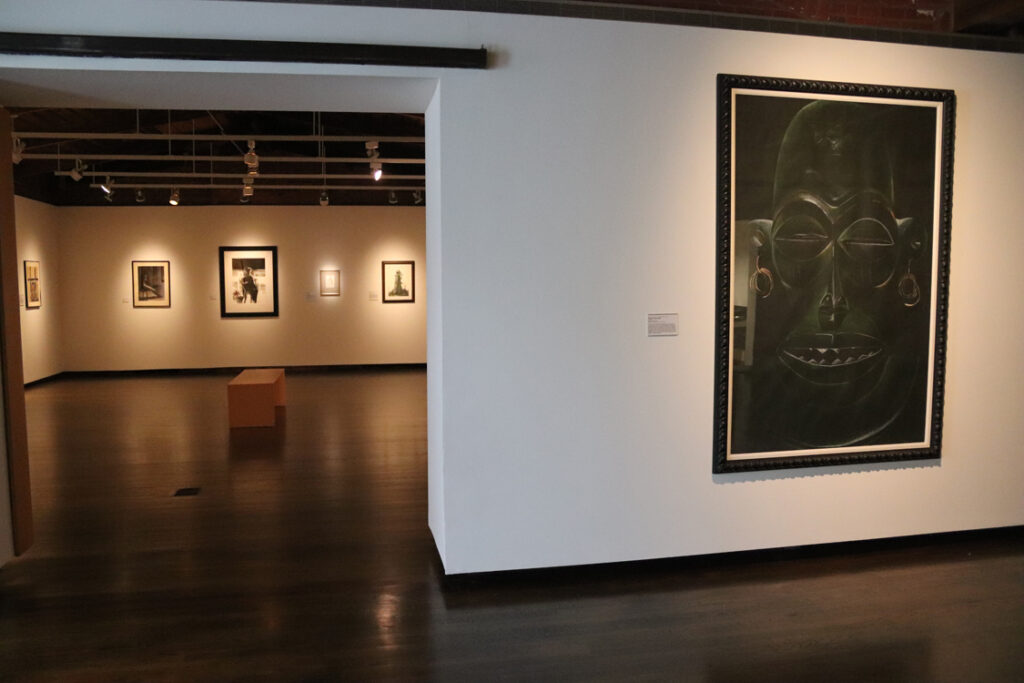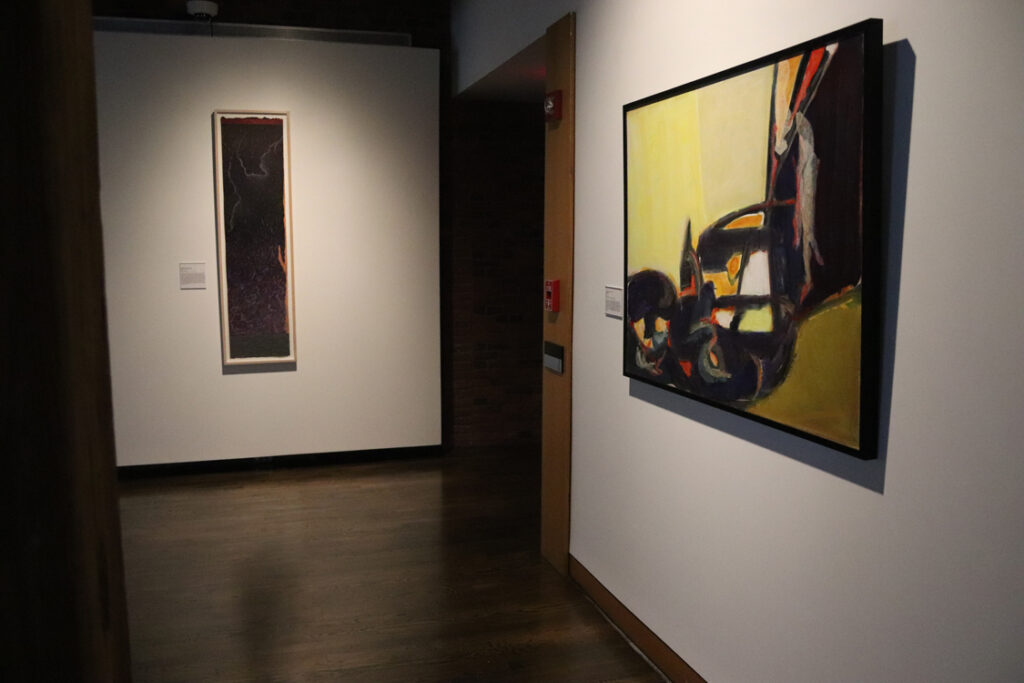






1.
Amos “Ashanti” Johnson (1950 – 2017)
Bajokwe Mask Study
c. 1971
pastel on black paper
Museums Collections, Gift of Paul R. Jones
The Paul R. Jones gift includes several works by the late Amos “Ashanti” Johnson, a South Carolina-based graphic artist, painter, and printmaker. Johnson’s work is often figurative, and reflects the influence of Pan-African philosophy. By using African iconography and motifs, Johnson’s art signals the bonds of unity and solidarity amongst all people of African descent, including African Americans. In addition to his artistic practice, Johnson also adopted the name “Ashanti” to reflect his personal affinity with the Ashanti (or Asante) people of modern-day Ghana.
2.
David Driskell (b. 1931)
Masked Man
1973
mixed media and collage on paper
Museums Collections, Gift of Paul R. Jones
David Driskell holds a significant position in American art history, as an artist, scholar, and educator. First trained as a painter at Howard University, Driskell received a Masters of Fine Arts degree from the Catholic University of America in Washington, D.C. In 1976, he curated the groundbreaking exhibition Two Centuries of Black Art: 1750 – 1950 at the Los Angeles County Museum of Art, and he has been the recipient of numerous honors, including ten honorary doctoral degrees. Driskell currently holds the title of Distinguished University Professor of Art, Emeritus, at the University of Maryland, College Park, and he is regarded as one of the leading authorities on African American art. As an artist, Driskell works primarily in collage and mixed media, employing the juxtaposition of materials to convey a complex message to viewers. In this work, the collaged elements of the figure’s face, half-real, half-masked, embody not only Driskell’s use of diverse materials, but also what W.E.B. Du Bois referred to as the “double consciousness” of African American identity.
3.
Evelyn Mitchell (b. 1926)
Art Afrique
1970
mixed media and collage on paper
Museums Collections, Gift of Paul R. Jones
4.
Lee Ransaw (b. 1938)
Remembrance: Tribute to Ancestors
1994
color lithograph, with hand coloring on paper
Museums Collections, Gift of Paul R. Jones
In this work, Ransaw evokes the painful experience of the Middle Passage, the journey in which millions of captive Africans, densely packed onto ships, were transported across the Atlantic Ocean to be sold as slaves in America and the West Indies. An estimated 15% of the Africans who were forced to undertake the Middle Passage died at sea, and suicide was common. With this work, Ransaw not only depicts the tragedy of that watery journey, but also memorializes the ancestors who endured the crossing, uniting the past and present in a shared history of trauma.
5.
Nanette Carter (b. 1954)
Light Over Soweto #5
1989
oil pastel on paper
Museums Collections, Gift of Paul R. Jones
Nanette Carter refers to her works as “scapes,” a conceptual variation on “landscapes,” in which she weaves political themes and issues into works that are otherwise inspired by nature. The title of this artwork refers to the South African township of Soweto, located just outside of Johannesburg, which was the site of major political unrest during the Apartheid era (approximately 1948 – 1994). Soweto was also the home of freedom fighter and future South African President Nelson Mandela. The glowing embers of “light” that Carter imagines to be skyrocketing over Soweto may serve as a premonition of Mandela’s impending release from prison, which occurred just one year after this work was made. Carter’s interest in the crisis in South Africa in the late 1980s reflects the global attention that Apartheid received at that time.
6.
John W. Feagin (b. 1929)
Still Life
1998
oil on canvas
Museums Collections, Gift of Paul R. Jones
A life-long resident of Birmingham, Alabama, John W. Feagin received his bachelor’s and master’s degrees in education and visual arts from Alabama State University. For 34 years, he taught art at George Washington Carver High School in Montgomery, and throughout his career as an educator, Feagin continued to be a prolific and diverse artist. Additional work by the artist, which can be seen on view nearby, highlights the range of Feagin’s artistic practice.

